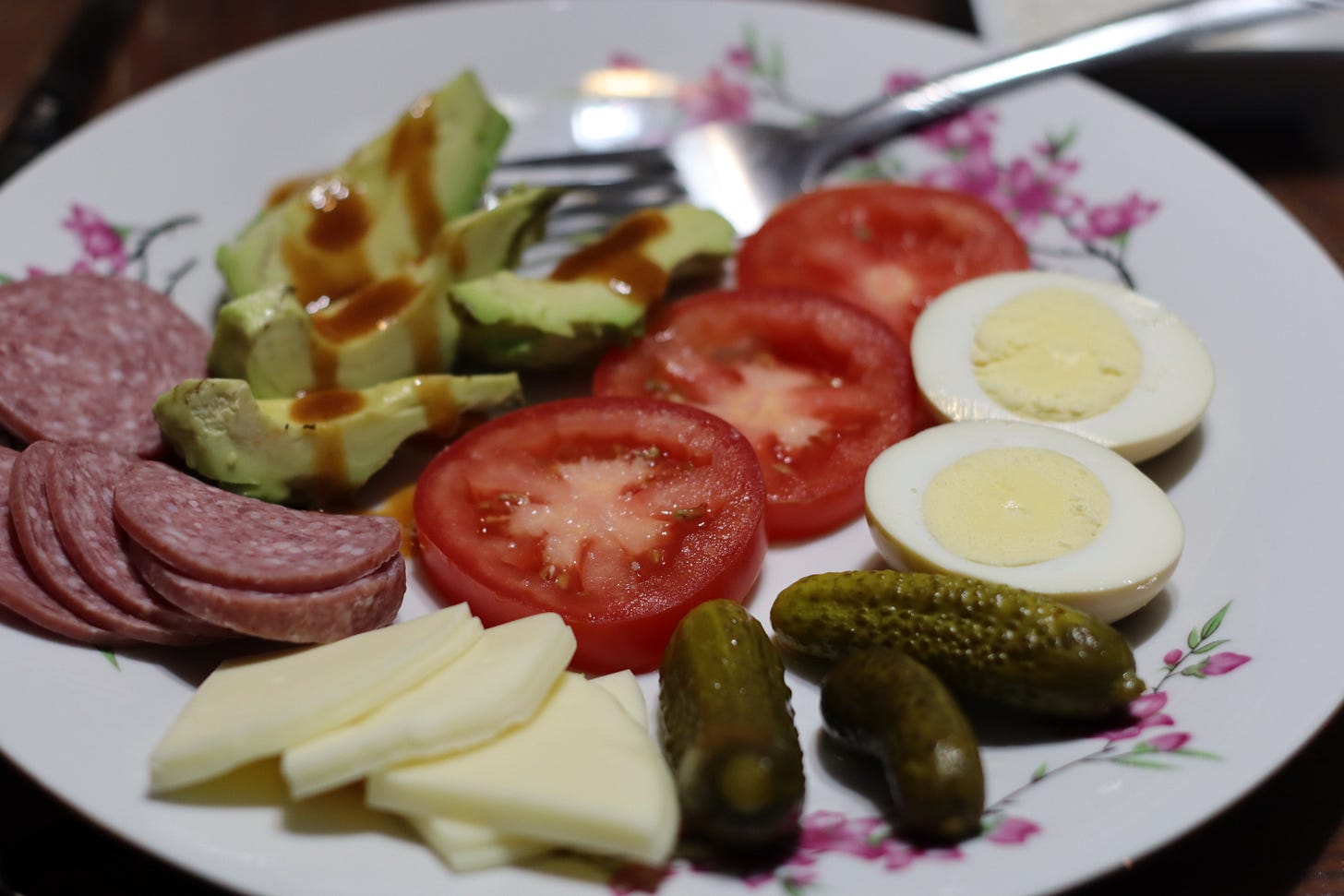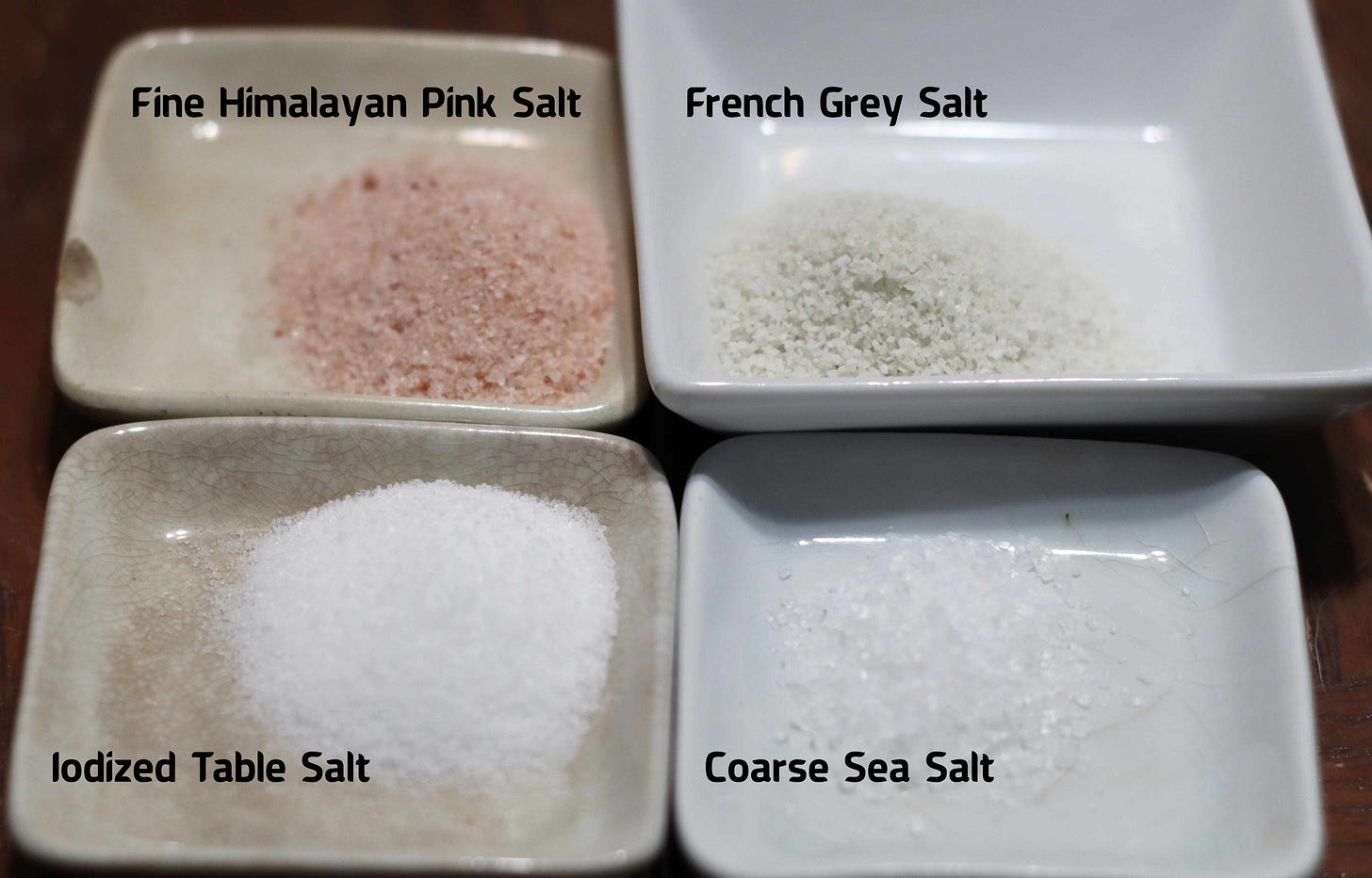Today’s spice is salt. I have to say, I admire Selefina’s… flexibility, yeah, that’s what we will call it. Flexibility towards the term spice. I mean, food without salt is flat, boring, bland even (although there are ways to work around it if you must). Still, I was certainly not expecting to pull a packet of it out of the calendar this morning! I get my morning coffee, start my day’s work, and about the time I get the second cuppa, I also pull the spice packet and ponder what I’ll do with it. In this case, well, you’ll get an essay.
I could literally write a book about salt, but someone has already done that. Kurlansky’s Salt: A World History may sound boring but I assure you, the history of salt is the history of mankind, civilization, the rise and fall of empires in wars and destruction… in short, bloody, thrilling, and savage. You should read it. Or, if you prefer fiction, I was just reading Alma Boykin’s novel White Gold of the Empire which is fantasy, yes, but solidly grounded in thorough historical research on salters. Salt is not just salt.
Salt has been used as an essential part of the human diet - we would die a painful death without it - since time immemorial. It was also what made food safe as it was a way to cure meats and keep them from decay for storage. The method called ‘corning’ refers to a strong brine that started with grain-sized pieces (corns) of salt. In the Roman era, we got the saying ‘worth his salt’ as the word salary stems from soldiers and others being paid with salt. Salt was a valuable commodity.
In the modern era, it has been vilified as a contributor to medical ills, although we are starting to understand that our assumptions are likely misplaced: “the available data suggest that the association of sodium intake to health outcomes reflected in morbidity and mortality rates is modest and inconsistent”. While there are some people who need to consume less (and processed foodstuffs generally contain more than is necessary) properly used salt isn’t the villain. Salt is delicious. Salt is necessary if you live in a hot climate, as we sweat it out and must make sure we replace it, lest we cramp and fall ill.
So! Salt is salt is salt…? My husband looked at my little heaps of it (truly, we are wealthy people, relative to a Roman household!) and wondered what the difference is. Is it all a ploy to sell you higher-priced goods by creating a false sense of pretensions towards flavor that isn’t there? Not really. The coloration of the pink and the gray salt imply that they have not been fully refined, as has the table salt and sea salt. Which means there is a presence of other minerals, which will lend flavor (albeit very subtle). For me, I like a nice kosher salt (not pictured) for the flaky shape that allows me to better manipulate pinches and sprinkles into or onto food. I like the coarse salts for things like pretzels or other breads I want to add salt to.
Bread and salt, an ancient combination of hospitality offering. Bread can’t be salty - too much salt inhibits the yeast, and you’ll wind up with flat, tough bread - but you can easily toss some coarse salt on top of it prior to baking that will lend a wonderful flavor to the final product. I will likely do that with the French grey, as it has that sharp flaky shape that will scatter well. For my tasting tonight, I sliced a nice tomato and sprinkled it on that. Table salt is so fine that you can easily overdo it for this use. Additionally, with the more coarse salts, it won’t dissolve immediately, so you can taste it and savor it on its own, not just as salty whatever… salting fruit makes the sugars stand out in bright contrast to the salt, and on a hot day is a nice way to get a balanced electrolyte treat. A pinch of salt in your water if you’ve been sweating is a very good idea. A pinch of salt in coffee will cut the bitterness, and a good friend and I when out to breakfast will often look at one another wordlessly after the first sip at the hot black nectar of the gods, and silently pass the salt shaker.
Speaking of salt shakers, I dislike them on the table. I keep one because my husband was flummoxed over the salt cellar I prefer, so I make him happy because I love him. I also have a salt grinder on the table - filled with a blend of rock salt, dried lemon peel, and thyme. Very nice flavors! The salt cellar and a physical manipulation give me a more measured addition than the free-flow of fine table salt from a shaker, making it more likely I will not oversalt my food. It does take some getting used to, I realize.
Yes, I have several kinds of salt in the house. I use all of them - including this new salt, which I will happily try in different ways - for different things. If you are salting soup, most any will do. You won’t taste the difference, so ordinary salt is sufficient. If you are wanting the salt to sparkle on its own, one of the ‘fancy’ salts is worth putting to work for you!







My hubby likes Hawaiian black salt, or Mediterranean black salt, both of which are sea salts combined with charcoal. I like Pink. Iodized is too bitter for me. LOVE salt on watermelon or cantaloupe. Sea salt is good.
When using a salt shaker I always shake into my hand which allows me to better regulate the quantity I am using.